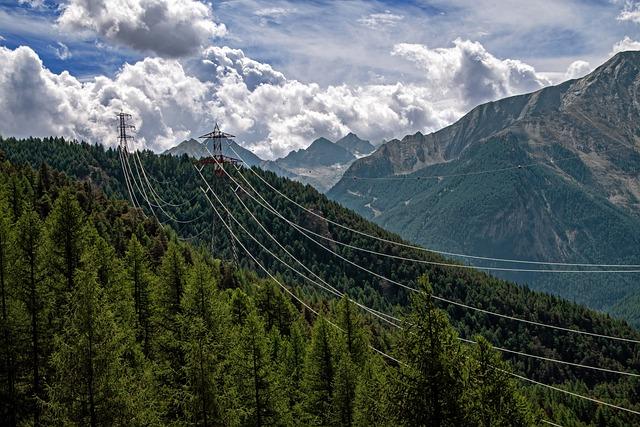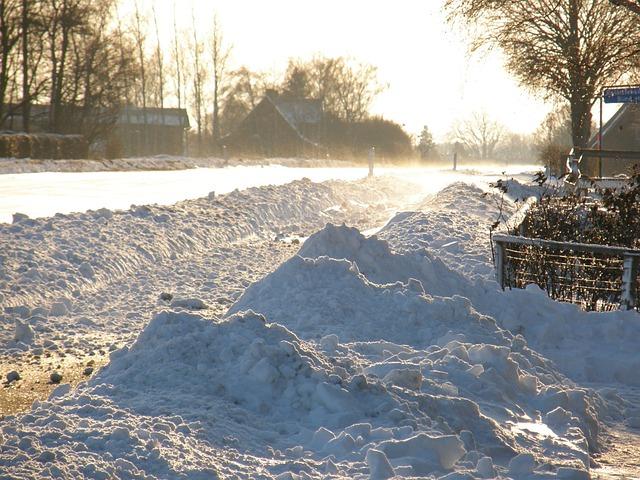Pruning is an essential aspect of tree care that helps maintain their health, appearance, and structural integrity. However, different tree species require specific pruning techniques to ensure optimal growth and minimize potential damage. In this article, we will explore the various pruning techniques tailored to different tree species to help you effectively care for your trees.
Table of Contents
- Understanding Tree Growth Patterns
- Pruning Deciduous Trees for Optimal Health
- Pruning Evergreen Trees to Maintain Shape
- Special Considerations When Pruning Fruit Trees
- Pruning Techniques for Ornamental Trees
- Tips for Pruning Trees Safely
- Q&A
- Conclusion
Understanding Tree Growth Patterns
When it comes to pruning trees, it is essential to understand the growth patterns of different tree species. Each tree species has its own unique growth habits and characteristics, which need to be taken into consideration when determining the best pruning techniques.
**Here are some key pruning techniques for different tree species:**
- **Deciduous Trees**:
- Prune in late winter or early spring when the tree is dormant.
- Remove dead or diseased branches first, followed by crossing or rubbing branches.
- Encourage strong branch structure by pruning to outward-facing buds.
- **Evergreen Trees**:
- Prune in early spring before new growth begins.
- Thin out crowded branches to improve air circulation and sunlight penetration.
- Avoid removing more than 1/3 of the tree’s foliage at once.
| Tree Species | Optimal Pruning Time |
|---|---|
| Oak | Late winter/early spring |
| Pine | Early spring |
Pruning Deciduous Trees for Optimal Health
When it comes to , it’s important to understand the specific techniques required for different tree species. Each type of tree has its own unique characteristics and growth patterns, so it’s essential to tailor your pruning approach accordingly.
Here are some general tips and techniques for pruning different types of deciduous trees:
- Oak Trees: Prune oak trees during the dormant season to prevent the spread of oak wilt disease. Avoid pruning in the spring and summer when oak wilt is most active.
- Maple Trees: Remove any dead or diseased branches from maple trees to promote healthy growth and prevent the spread of diseases such as verticillium wilt.
- Birch Trees: Prune birch trees in the late winter or early spring to minimize sap loss. Avoid pruning in the fall when birch borers are most active.
| Tree Species | Pruning Season |
|---|---|
| Oak Trees | Dormant season |
| Maple Trees | Anytime |
| Birch Trees | Late winter/early spring |
Pruning Evergreen Trees to Maintain Shape
Common Pruning Techniques:
- Thin out branches to allow more light and air circulation.
- Remove dead or diseased branches to promote tree health.
- Prune back new growth to maintain desired shape and size.
Tree Species Specific Pruning Tips:
- For Pine trees, prune in late winter to early spring to avoid sap bleeding.
- When pruning Juniper trees, be sure to follow the natural growth pattern to prevent damage.
- Cedar trees should be pruned lightly to avoid stressing the tree.
| Tree Species | Best Time to Prune |
|---|---|
| Pine | Late winter to early spring |
| Juniper | After flowering |
| Cedar | After new growth has hardened |
Special Considerations When Pruning Fruit Trees
When it comes to pruning fruit trees, it is essential to consider the specific needs of each type of tree to ensure proper growth and fruit production. Different tree species have unique requirements that must be taken into account during the pruning process. Here are some special considerations to keep in mind:
- Apple Trees: Apple trees benefit from annual pruning to remove dead or diseased wood, improve air circulation, and promote fruit production. It is important to prune apple trees in late winter or early spring before new growth begins.
- Peach Trees: Peach trees should be pruned lightly to encourage new growth and maintain a balance between vegetative growth and fruit production. Avoid heavy pruning as it can lead to reduced fruiting the following season.
- Citrus Trees: Citrus trees are best pruned in late winter or early spring to remove dead wood, shape the tree, and promote healthy growth. Be cautious when pruning citrus trees to avoid oversizing and exposing the tree to sunburn.
| Fruit Tree Species | Best Time to Prune |
|---|---|
| Apple Trees | Late winter/Early spring |
| Peach Trees | Lightly, after fruiting season |
| Citrus Trees | Late winter/Early spring |
Pruning Techniques for Ornamental Trees
When it comes to pruning ornamental trees, it is important to understand that different tree species require different techniques to ensure their health and beauty. By learning the specific needs of each tree variety, you can effectively prune them to promote growth and overall well-being.
**Some common pruning techniques for various ornamental tree species include:**
- **Thinning:** This technique involves selectively removing branches to allow more sunlight and air circulation throughout the tree, promoting healthy growth.
- **Heading:** Heading cuts involve pruning the tips of branches to encourage lateral growth and create a fuller canopy.
- **Deadheading:** Removing dead or diseased branches helps to prevent the spread of disease and improves the overall appearance of the tree.
| Tree Species | Pruning Techniques |
|---|---|
| Japanese Maple | Thinning, Heading |
| Magnolia | Heading, Deadheading |
| Crepe Myrtle | Thinning, Deadheading |
Tips for Pruning Trees Safely
When it comes to pruning trees safely, it’s important to keep in mind the specific techniques required for different tree species. Each type of tree has its own unique growth patterns and characteristics that must be considered when pruning to ensure the health and longevity of the tree.
Here are some tips for pruning different tree species:
- Deciduous Trees: Deciduous trees, such as maple or oak, should be pruned during their dormant season. Remove dead or diseased branches first, then focus on shaping the tree to encourage healthy growth.
- Evergreen Trees: Evergreen trees, like pine or cedar, should be pruned in late winter or early spring. Be cautious not to remove too much foliage, as this can stress the tree. Trim back new growth to maintain the tree’s shape and promote air circulation.
- Fruit Trees: Fruit trees, such as apple or peach, require annual pruning to maximize fruit production. Remove any crossed or crowded branches to allow sunlight to reach the fruit-bearing branches. Prune in late winter before the tree starts to bud.
Q&A
Q: Why is pruning important for tree maintenance?
A: Pruning helps promote healthy growth, improve overall appearance, and remove damaged or diseased branches.
Q: How do pruning techniques differ for different tree species?
A: Pruning techniques vary based on the specific growth habits and needs of different tree species. Some may require more frequent pruning to maintain shape, while others may need minimal pruning to thrive.
Q: What are some common pruning mistakes to avoid?
A: Some common pruning mistakes include improper timing, excessive cutting, and cutting branches too close to the trunk. These mistakes can lead to stunted growth, disease, and even tree death.
Q: Are there specific tools needed for pruning different tree species?
A: Yes, different tree species may require different pruning tools, such as hand pruners, loppers, and pruning saws. It’s important to use the right tools for the job to ensure clean cuts and prevent damage to the tree.
Q: How often should trees be pruned?
A: The frequency of pruning depends on the tree species, its age, and its growth rate. Generally, trees should be pruned on a regular basis to maintain health and appearance. It’s recommended to consult a professional arborist for guidance on the best pruning schedule for your specific tree species.
Conclusion
In conclusion, understanding the specific pruning techniques required for different tree species is essential for maintaining the health and structure of your trees. By following the guidelines outlined in this article, you can ensure that your trees thrive and continue to enhance the beauty of your landscape for years to come. Remember to always consult with a professional arborist if you are unsure about the best pruning practices for a particular tree species. Thank you for reading, and happy pruning!
Simpsons Tree Services, Servicing Melbourne’s North Eastern Suburbs
Book a quote online at www.simpsonstrees.com.au




